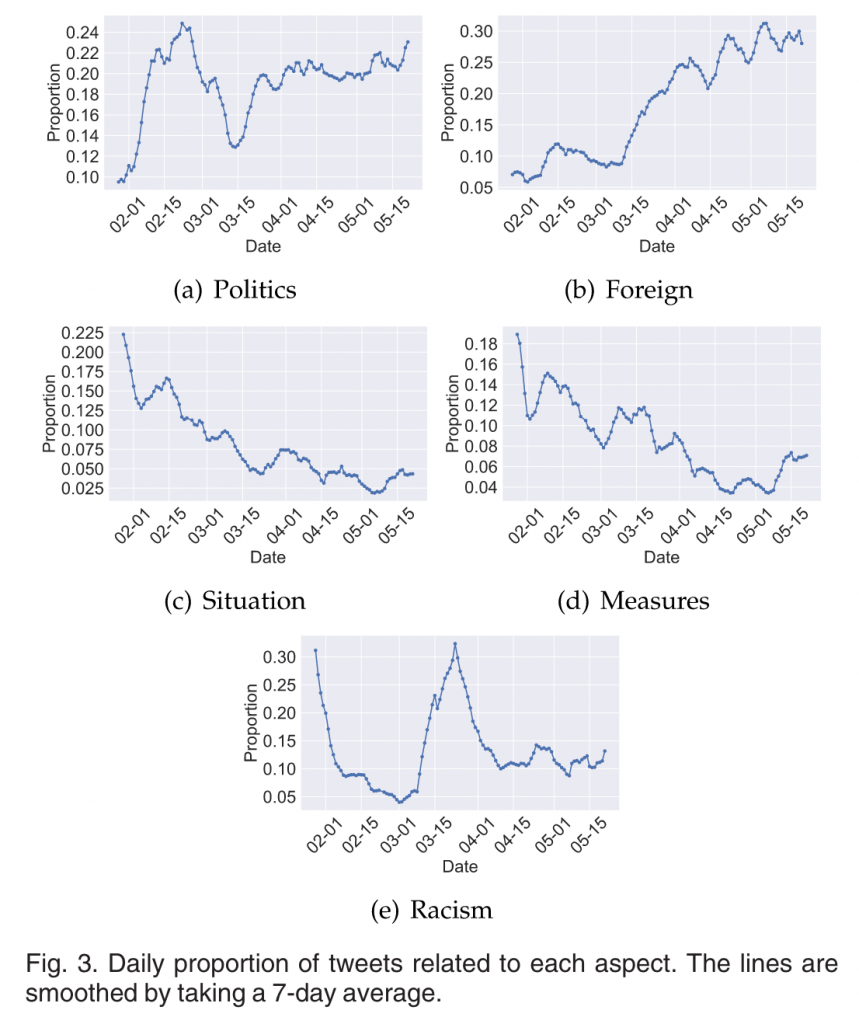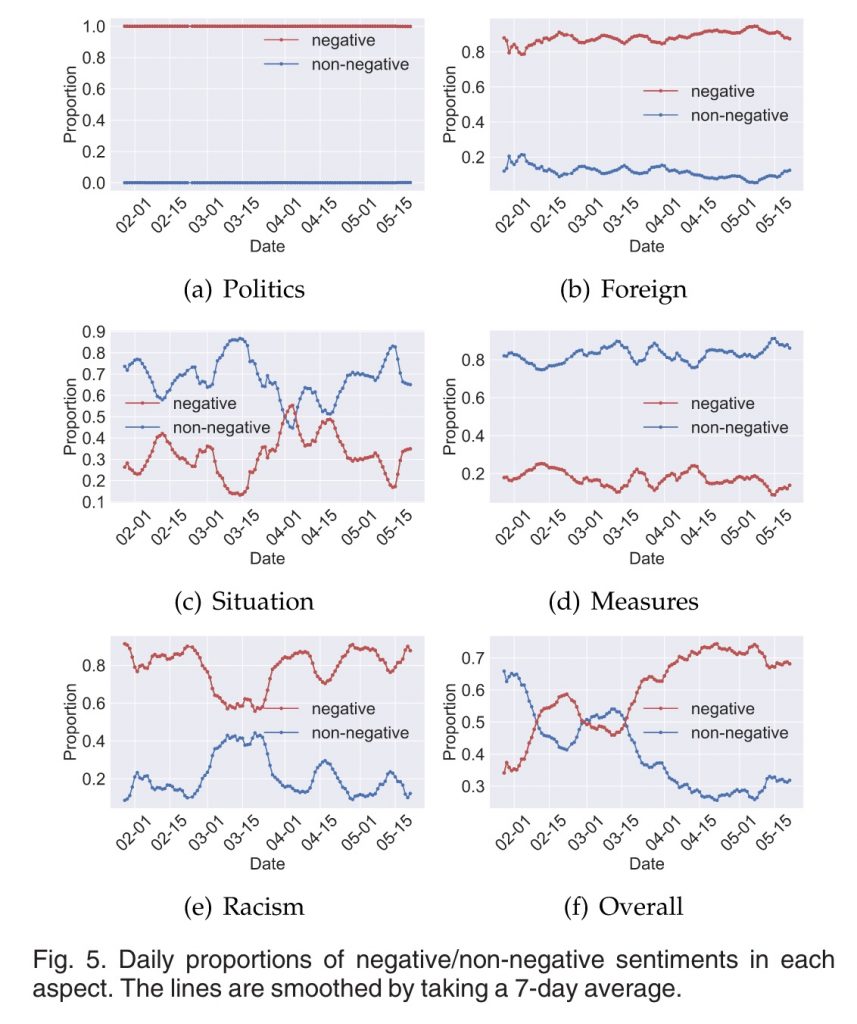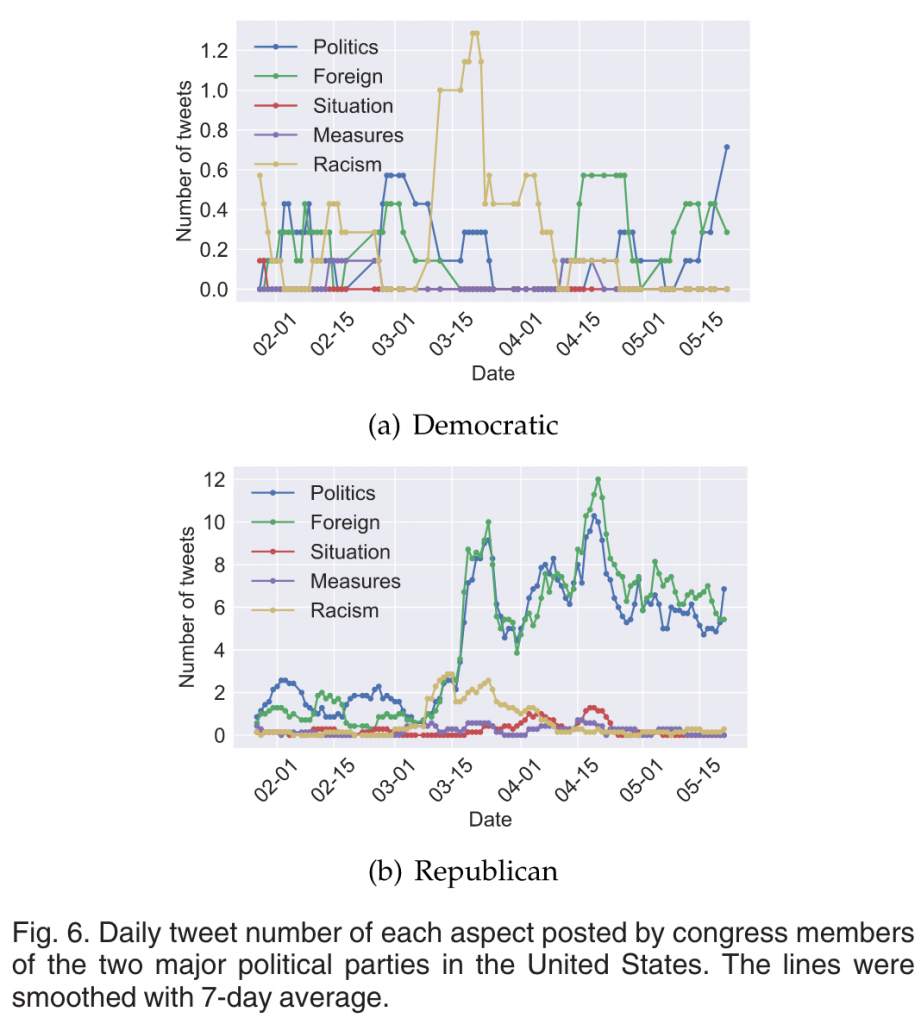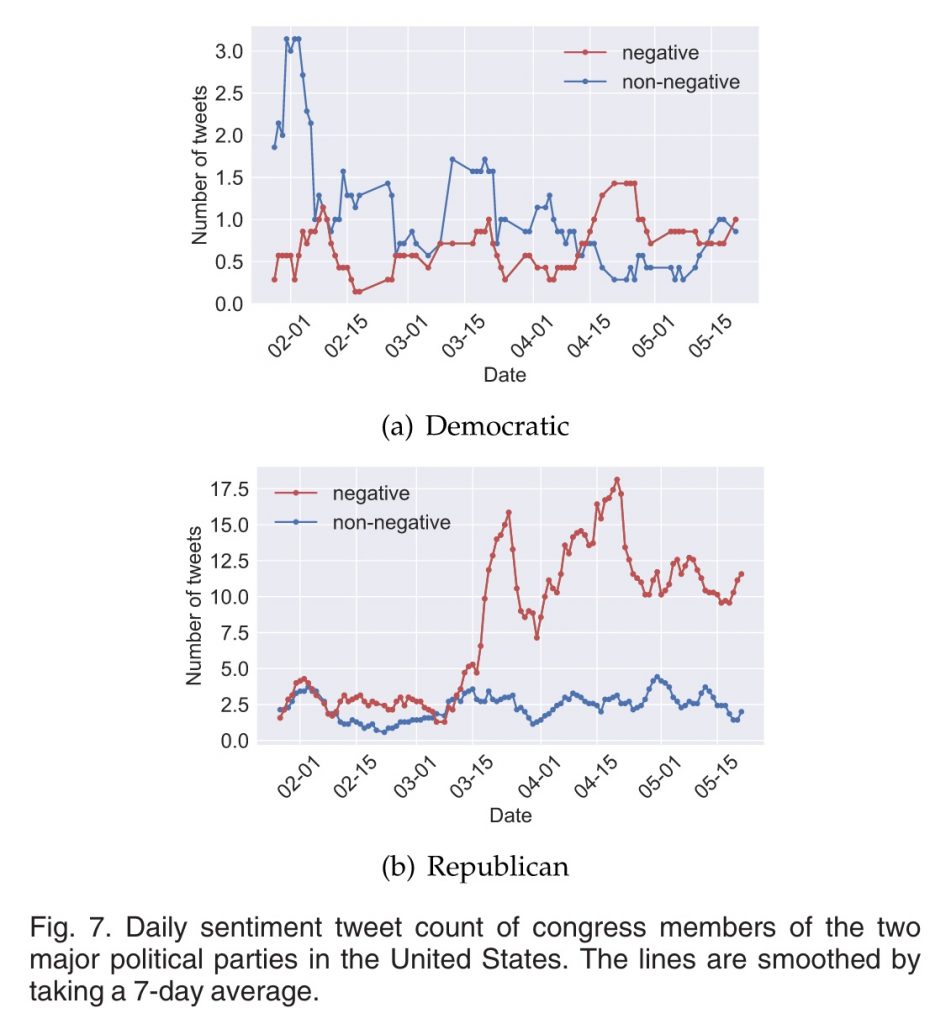How people discussed China in the initial outbreak of COVID-19
After the initial outbreak of COVID-19 in Wuhan, the virus spread quickly to all over the world, pushing China onto global headlines. The infodemic and partisanship that had been around for years made things worse, and racism had surged.
In this piece of work, we were curious about how the world’s perception of China has changed in response to COVID-19, and what were the reasons for those changes. To do that, we looked at Twitter discussions that addressed the pandemic and China simultaneously.
Overall, we observed a dramatically deteriorating image of China globally, going from mostly non-negative in January, 2020 to mostly negative after mid-March. In April and May, almost 70% of China-related discussions were negative on Twitter.
Two further observations might explain this trend:
- Growing attention to the ideological aspects of the pandemic (politics, foreign affairs, and racism) and shrinking attention to the factual aspects (the situation in China and the counter-epidemic measures China takes);
- Negative perception of ideology and non-negative perception of facts.


We also explored how specific stakeholders reacted to the outbreak, including US politicians, top US and UK media, and social bots on Twitter. For example, we found Republicans were far more keen on this topic than the Democrats. They were also more negative than their political counterparts, focusing more on ideological aspects than factual ones.


The technology behind this work is aspect-based sentiment analysis (ABSA). Texts in our corpus were often confounded with multiple feelings towards different objects. For instance, a user could be affirmative about the measures China was taking to prevent the virus from further spreading, but at the same time criticize the Chinese government for being slow to release information.
Traditional sentiment analysis can only extract a single sentiment value of a text. By comparison, ABSA can extract the “aspects” the user is referring to, and judge for each of the aspects what sentiment the user is expressing. Therefore, it enables us to measure how people’s attention to different aspects as well as their sentiment towards those aspects evolved over time.
This work is published Open Access:
Chen, H., Zhu, Z., Qi, F., Ye, Y., Liu, Z., Sun, M., & Jin, J. (2021). Country Image in COVID-19 Pandemic: A Case Study of China. IEEE Transactions on Big Data, 7(1), 81–92. https://doi.org/10.1109/TBDATA.2020.3023459